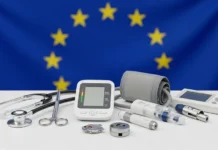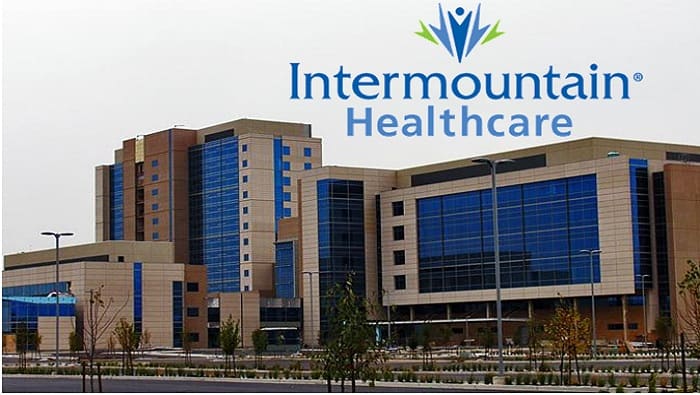Late-stage chronic kidney disease and end-stage renal disease patients make up one of the most costly, complex and fragmented patient populations – and pose a significant challenge to the healthcare industry.
Unfortunately, only a small percentage of patients that met the criteria for nephrologist referral are actually referred to a nephrologist early enough. That leads to many patients first learning of their condition when they crash in the emergency department. The problem is most pronounced in late-stage CKD patients.
“The vast majority of CKD and ESRD patients also have two or more comorbidities,” explained Ray Morales, assistant vice president at Intermountain Healthcare System Kidney Services. “The most common include diabetes and hypertension, which significantly contribute to the complexities and costs associated with this population.
“These conditions require customized care interventions,” he continued. “We initially embarked on our synthetic data project with MDClone to identify those patients before their conditions become critical.”
Intermountain Healthcare is well-positioned as a fully integrated healthcare delivery system to actively manage this complex and costly patient population, Morales said.
“With continual access to these patients across the continuum of care, Intermountain can actively manage CKD and ESRD through robust, disease-specific clinical care programs and services to provide appropriate and timely care to minimize cost and improve outcomes,” he explained.
“Specifically, [there was] a shift to a data-driven, proactive care team approach to managing the population of patients with kidney disease at Intermountain,” Morales said.
“The care team consists of nephrologists, advanced practice providers and kidney care navigators, all working together to care for a population. The system would rely on an underlying database to identify patients, capture them into the system and manage them utilizing the Intermountain kidney care pathway.”
As an example, a smooth transition to home dialysis requires active planning with preemptive placement of peritoneal dialysis catheters or early surgery for fistula placement to enable home hemodialysis, Morales explained.
Without careful planning, these patients will typically “crash” into dialysis via hospital admission, which has poorer outcomes than a smooth transition and is very expensive, he said.
“By leveraging predictive analytics, we can identify and engage patients much earlier in their disease to ensure they receive the proper education and resources around treatment modality selection,” he said.
“As a result, of the 81 identified patients in our program needing dialysis, 53% say they will select a home dialysis modality. Of those who have started dialysis, more than 30% have started on home dialysis.
“This is exceptional when you consider, nationally, 90% of patients undergoing maintenance dialysis use conventional in-center hemodialysis,” he continued. “Home dialysis patients typically have fewer ER visits, hospital admissions and inpatient hospital days.”
Staff discovered they needed a more accurate way to identify these patients and the status of their condition and stage. They set out to define algorithms that would combine clinical and administrative information to certify patients by CKD stage, and establish a more granular identification of kidney disease beyond standard clinical documentation.
“The Intermountain Healthcare Kidney Services program begins by working upstream on patients with early stage CKD,” said Morales.
“The first step involves identifying these patients in our system using MDClone by identifying cases of comorbidity clusters, lab trajectories, CPT Codes, ICD-10 codes, claims data and other operational constructs, as well as pathology reports that use both structured and unstructured data elements.
“We stratify these patients by risk, defined by gaps in care, time from last encounter and comorbid conditions, and to set an operational construct to hardwire the care process into a programmatic construct,” he continued.
“From this, we were able to start defining what the next best action for these patients would be in the form of education, referrals for transplant or at-home dialysis – and how to establish a safety net to avoid progression.”
A nurse kidney-care coordinator is assigned to a patient and works to begin closing gaps in care. The primary intervention is a light-touch connection with the patient and their primary care provider, to make sure patients are receiving care for diabetes and hypertension if needed. There’s also a review of their medications to make sure they are not taking any nephrotoxic drugs.
“Importantly, the invention also includes education about kidney disease, options for treatment if the disease gets worse and advice around diet,” said Morales.
“This intervention produces value in multiple ways. First and foremost, it delays the progression to ESRD. The intervention closes gaps in care for diabetes and hypertension by making sure the patient is actively receiving care and monitoring their process.”
Additionally, Intermountain Healthcare Kidney Services seeks to ensure there is appropriate documentation for risk stratification of the patient in the medical record.
“Importantly, the program also seeks to complete testing required for CKD with appropriate test for proteinuria,” Morales said. “This is a requirement for the HEDIS measures. Slowing of the progression of disease produces significant cost savings in decreased incidence of ESRD, but these changes require several years to accurately measure.”
Importantly, the process also establishes a relationship with the patient for kidney care.
“This ensures that timely referral to nephrologists will be made if the patient progresses in their kidney disease,” he said. “In the short term, the program produces value in terms of closing gaps in care for diabetes and hypertension, appropriate coding and ensuring testing for proteinuria.”
The first analysis the team completed was an evaluation of the average number of encounters and the impact that had on stage progression.
“We learned that patients with five or more visits had a far lower probability of progressing in stage than those with less than five,” Morales reported. “Additionally, we quickly realized how variable these patients were in complication and cost by stage – and that this variability in cost could be attributed to comorbidities and complications.
“Our patients in the first year had an average of eight encounters, whether it was a lab, clinic visit or phone call with a care navigator,” he said. “The result is, patients who we’ve seen for the first time in stage CKD 3a 3b, none have progressed to dialysis. We have also seen about 600 patients in our value-based care program, and only 81 or 14% had an unplanned admission.”
Because of early engagement and education, kidney services has been very successful in sending new dialysis patients to home dialysis with nearly 40% of the patients selecting a home therapy.
These activities, along with maintaining some patients on conservative care, preemptive transplant and palliative care when appropriate, are high-value activities in terms of patient experience, outcomes and savings, Morales said.
“This is an amazing accomplishment, and I can’t say enough about our team and the work they’ve put in to managing the patients’ needs,” he said. “This is an important message, as this speaks volumes to the clinical and financial outcome, both to our value-based care program with SelectHealth and to our patients.”
“With a focus of managing a population in a value-based model of care, a large part of our success has been dependent on investing in widely adopted technology and care models driven by predictive models and risk-stratification analytics, clear clinical care pathways, and investing in specialized care managers and medication management,” said Morales.


















